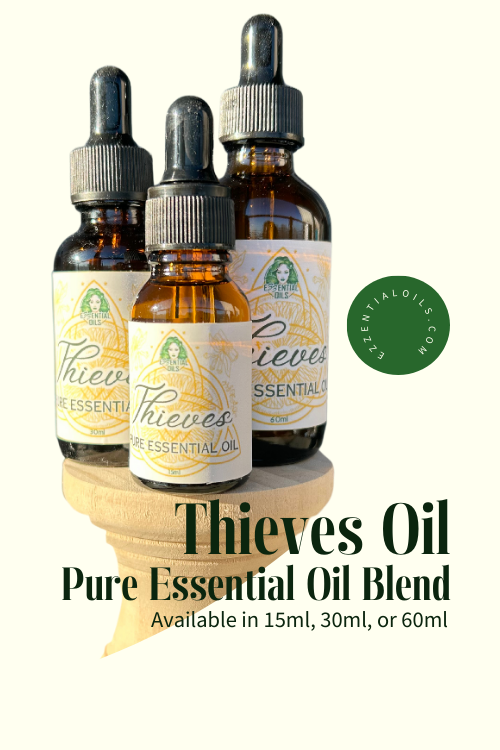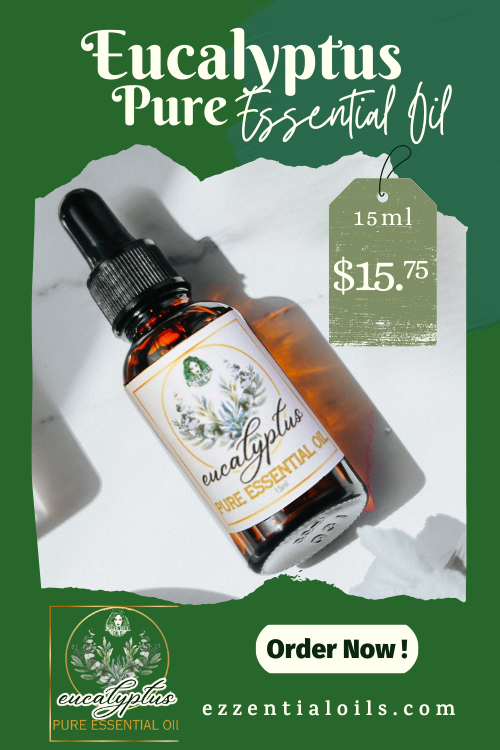Healing With Essential Oils:
Migraine And Headache Relief
Aromatherapy for Migraines and Headaches: A Natural Path to Relief
Migraines and headaches can disrupt your day, sap your energy, and leave you searching for relief. If you're seeking a natural way to manage the pain, essential oils may be the soothing remedy you need. With their calming aromas and therapeutic properties, essential oils have been used for centuries to treat various ailments, including head pain. In this article, we'll explore how essential oils can help alleviate migraines and headaches, how to use them effectively, and which oils are best suited for the task.
Understanding Migraines and Headaches
Before diving into essential oils, it's important to understand the difference between migraines and headaches. While both involve head pain, they differ in their intensity, symptoms, and underlying causes.
Headaches: These are generally less severe and may be caused by tension, dehydration, sinus congestion, or stress. Common types include tension headaches and cluster headaches.
Migraines: These are more intense and often accompanied by additional symptoms like nausea, light sensitivity, visual disturbances (aura), and throbbing pain on one side of the head. Triggers can include hormonal changes, food sensitivities, sleep disturbances, and stress.
Understanding the type of pain you're experiencing can help you choose the most effective essential oils and application methods.
Why Use Essential Oils for Head Pain?
Essential oils offer a natural, holistic approach to managing migraines and headaches. They work by addressing the root causes, such as stress, muscle tension, or sinus congestion. Here's how they can help:
Pain Relief: Certain oils have analgesic properties that help reduce pain.
Relaxation: Aromas can calm the mind and relax tense muscles.
Improved Circulation: Some oils stimulate blood flow, relieving pressure and improving oxygenation in the head.
Stress Reduction: Since stress is a common trigger, the calming effects of aromatherapy can prevent headaches before they start.
Best Essential Oils for Migraines and Headaches
Here are some of the most effective essential oils for relieving head pain:
Peppermint Oil
Why it works: Peppermint oil contains menthol, which provides a cooling sensation and improves blood flow.
Best for: Tension headaches, sinus headaches, and migraines.
How to use: Dilute with a carrier oil and apply to your temples and the back of your neck. Avoid contact with your eyes.
Lavender Oil
Why it works: Lavender is known for its calming and sedative properties, making it ideal for stress-induced headaches.
Best for: Migraines and tension headaches.
How to use: Diffuse in your room, inhale directly, or add a few drops to a warm bath.
Eucalyptus Oil
Why it works: Eucalyptus clears nasal passages and relieves sinus pressure, a common cause of headaches.
Best for: Sinus headaches.
How to use: Add a few drops to a bowl of hot water, cover your head with a towel, and inhale the steam.
Rosemary Oil
Why it works: This oil has anti-inflammatory and pain-relieving properties and improves circulation.
Best for: Tension headaches and migraines.
How to use: Massage into your temples or add to a diffuser for aromatherapy.
Chamomile Oil
Why it works: Chamomile is known for its calming effects and ability to reduce stress.
Best for: Stress-related headaches and migraines.
How to use: Inhale directly or use in a compress.
Frankincense Oil
Why it works: This oil has grounding and anti-inflammatory properties that can reduce headache intensity.
Best for: Migraines and tension headaches.
How to use: Diffuse or apply topically to your temples and the base of your skull.
Clary Sage Oil
Why it works: Clary sage balances hormones and reduces stress, making it effective for hormonal migraines.
Best for: Menstrual migraines.
How to use: Mix with a carrier oil and apply to your abdomen or temples.
How to Use Essential Oils for Headaches
Topical Application Diluting essential oils with a carrier oil is crucial to prevent skin irritation. Common carrier oils include coconut oil, jojoba oil, and almond oil. Mix 2-3 drops of essential oil with a teaspoon of carrier oil and massage into the temples, neck, or shoulders.
Inhalation Inhalation allows the therapeutic properties of the oils to reach your brain quickly. You can inhale directly from the bottle, use a diffuser, or create a steam inhalation by adding a few drops to hot water.
Compresses Soak a cloth in warm or cold water mixed with a few drops of essential oil. Apply the compress to your forehead or the back of your neck for 10-15 minutes.
Bath Soaks Adding essential oils to a warm bath can relieve tension and promote relaxation. Mix the oils with a dispersant like Epsom salts to ensure even distribution.
Recipes for Headache Relief
Cooling Temple Massage Blend
2 drops peppermint oil
2 drops lavender oil
1 teaspoon carrier oil Mix and massage into your temples and neck.
Stress-Relief Diffuser Blend
3 drops lavender oil
2 drops chamomile oil
2 drops frankincense oil Add to your diffuser and enjoy the calming aroma.
Sinus-Clearing Steam
3 drops eucalyptus oil
2 drops peppermint oil Add to a bowl of hot water, cover your head with a towel, and inhale deeply.
Hormonal Migraine Roller Blend
2 drops clary sage oil
2 drops lavender oil
1 drop rosemary oil
10 ml roller bottle filled with carrier oil Apply to your temples, wrists, and abdomen as needed.
Safety Precautions
While essential oils are natural, they are potent and should be used with care:
Always dilute essential oils before applying them to your skin.
Perform a patch test to check for allergies.
Avoid contact with your eyes and mucous membranes.
If you're pregnant, nursing, or have a medical condition, consult a healthcare provider before use.
Use therapeutic-grade oils for the best results.
Essential oils work best when combined with healthy lifestyle practices. Here are a few tips to prevent and manage headaches:
Stay hydrated.
Maintain a consistent sleep schedule.
Practice stress management techniques like yoga or meditation.
Avoid common migraine triggers, such as certain foods or strong odors.
Maintain good posture to prevent tension headaches.
When to Seek Medical Attention
While essential oils can be highly effective, persistent or severe migraines may require medical attention. Consult a healthcare provider if:
Your headaches are frequent and severe, over-the-counter medications don't provide relief, you experience unusual symptoms like sudden vision changes or numbness.
Migraines and headaches can be debilitating, but they don't have to control your life. Essential oils offer a natural, effective way to manage the pain and promote relaxation. By incorporating these powerful plant extracts into your routine, you can take a proactive step toward a healthier, headache-free life.
Start experimenting with essential oils today, and let their soothing aromas guide you to relief.
Using Essential Oils to Alleviate Headaches at Work
Headaches at work can be quite disruptive, impacting productivity and overall well-being. Essential oils offer a natural and non-invasive way to alleviate these discomforts. Incorporating them into the workplace environment can provide relief and promote a more comfortable atmosphere for employees.
Peppermint oil, renowned for its soothing properties, can be particularly effective in combating headaches. Its menthol component provides a cooling sensation that may help alleviate tension and ease headaches. Diffusing peppermint oil in common areas or using a diluted form for topical application, such as on the temples or wrists, can offer quick relief.
Lavender essential oil, known for its calming and relaxing properties, can also be beneficial for headaches induced by stress or tension. Its gentle aroma can help reduce stress levels, potentially alleviating headaches caused by mental strain. Incorporating lavender into the workplace environment through diffusers or using it in personal inhalers allows employees to benefit from its calming effects throughout the day.
Eucalyptus oil possesses analgesic and anti-inflammatory properties that may help relieve headaches, especially those associated with sinus congestion or allergies. Its refreshing scent can also contribute to a more invigorating atmosphere in the workplace. Using eucalyptus oil in a diffuser or adding a few drops to a bowl of hot water for inhalation can provide relief from headaches triggered by congestion.
When introducing essential oils in the workplace for headache relief, it's essential to consider individual sensitivities. Providing options or allowing employees to choose their preferred oils can ensure a more inclusive and comfortable environment. Moreover, using discreet methods like personal inhalers or targeted diffusers can help employees benefit from the oils without overwhelming others.
Creating designated relaxation areas where employees can retreat for a moment of respite can be a valuable addition to the workplace. These spaces, infused with headache-relieving essential oils, provide employees with an opportunity to unwind and alleviate stress, consequently reducing the likelihood of headaches.
Encouraging mindful practices, such as deep breathing exercises or mini-meditation sessions, while utilizing essential oils can enhance their efficacy in relieving headaches. These practices not only aid in relaxation but also promote overall well-being, contributing to a more harmonious and comfortable workplace environment.
Please note, the International Federation of Aromatherapists do not recommend that Essential Oils be taken internally, unless under the supervision of a Medical Doctor, who is also qualified in clinical Aromatherapy. In addition, Essential Oils must be properly diluted before use, in order to avoid any damages to property or adverse physical effects (including injury or bodily harm).
This article is for information purposes only. All Ezzential Oils products are for external use only unless otherwise indicated. This information is not intended to diagnose, treat, cure, or prevent any disease, and it should not be used by anyone who is pregnant or under the care of a medical practitioner. Please refer to our policies for further details, and our disclaimer below.
Migraines and headaches can disrupt your day, sap your energy, and leave you searching for relief. If you're seeking a natural way to manage the pain, essential oils may be the soothing remedy you need. With their calming aromas and therapeutic properties, essential oils have been used for centuries to treat various ailments, including head pain. In this article, we'll explore how essential oils can help alleviate migraines and headaches, how to use them effectively, and which oils are best suited for the task.
Understanding Migraines and Headaches
Before diving into essential oils, it's important to understand the difference between migraines and headaches. While both involve head pain, they differ in their intensity, symptoms, and underlying causes.
Headaches: These are generally less severe and may be caused by tension, dehydration, sinus congestion, or stress. Common types include tension headaches and cluster headaches.
Migraines: These are more intense and often accompanied by additional symptoms like nausea, light sensitivity, visual disturbances (aura), and throbbing pain on one side of the head. Triggers can include hormonal changes, food sensitivities, sleep disturbances, and stress.
Understanding the type of pain you're experiencing can help you choose the most effective essential oils and application methods.
Why Use Essential Oils for Head Pain?
Essential oils offer a natural, holistic approach to managing migraines and headaches. They work by addressing the root causes, such as stress, muscle tension, or sinus congestion. Here's how they can help:
Pain Relief: Certain oils have analgesic properties that help reduce pain.
Relaxation: Aromas can calm the mind and relax tense muscles.
Improved Circulation: Some oils stimulate blood flow, relieving pressure and improving oxygenation in the head.
Stress Reduction: Since stress is a common trigger, the calming effects of aromatherapy can prevent headaches before they start.
Best Essential Oils for Migraines and Headaches
Here are some of the most effective essential oils for relieving head pain:
Peppermint Oil
Why it works: Peppermint oil contains menthol, which provides a cooling sensation and improves blood flow.
Best for: Tension headaches, sinus headaches, and migraines.
How to use: Dilute with a carrier oil and apply to your temples and the back of your neck. Avoid contact with your eyes.
Lavender Oil
Why it works: Lavender is known for its calming and sedative properties, making it ideal for stress-induced headaches.
Best for: Migraines and tension headaches.
How to use: Diffuse in your room, inhale directly, or add a few drops to a warm bath.
Eucalyptus Oil
Why it works: Eucalyptus clears nasal passages and relieves sinus pressure, a common cause of headaches.
Best for: Sinus headaches.
How to use: Add a few drops to a bowl of hot water, cover your head with a towel, and inhale the steam.
Rosemary Oil
Why it works: This oil has anti-inflammatory and pain-relieving properties and improves circulation.
Best for: Tension headaches and migraines.
How to use: Massage into your temples or add to a diffuser for aromatherapy.
Chamomile Oil
Why it works: Chamomile is known for its calming effects and ability to reduce stress.
Best for: Stress-related headaches and migraines.
How to use: Inhale directly or use in a compress.
Frankincense Oil
Why it works: This oil has grounding and anti-inflammatory properties that can reduce headache intensity.
Best for: Migraines and tension headaches.
How to use: Diffuse or apply topically to your temples and the base of your skull.
Clary Sage Oil
Why it works: Clary sage balances hormones and reduces stress, making it effective for hormonal migraines.
Best for: Menstrual migraines.
How to use: Mix with a carrier oil and apply to your abdomen or temples.
How to Use Essential Oils for Headaches
Topical Application Diluting essential oils with a carrier oil is crucial to prevent skin irritation. Common carrier oils include coconut oil, jojoba oil, and almond oil. Mix 2-3 drops of essential oil with a teaspoon of carrier oil and massage into the temples, neck, or shoulders.
Inhalation Inhalation allows the therapeutic properties of the oils to reach your brain quickly. You can inhale directly from the bottle, use a diffuser, or create a steam inhalation by adding a few drops to hot water.
Compresses Soak a cloth in warm or cold water mixed with a few drops of essential oil. Apply the compress to your forehead or the back of your neck for 10-15 minutes.
Bath Soaks Adding essential oils to a warm bath can relieve tension and promote relaxation. Mix the oils with a dispersant like Epsom salts to ensure even distribution.
Recipes for Headache Relief
Cooling Temple Massage Blend
2 drops peppermint oil
2 drops lavender oil
1 teaspoon carrier oil Mix and massage into your temples and neck.
Stress-Relief Diffuser Blend
3 drops lavender oil
2 drops chamomile oil
2 drops frankincense oil Add to your diffuser and enjoy the calming aroma.
Sinus-Clearing Steam
3 drops eucalyptus oil
2 drops peppermint oil Add to a bowl of hot water, cover your head with a towel, and inhale deeply.
Hormonal Migraine Roller Blend
2 drops clary sage oil
2 drops lavender oil
1 drop rosemary oil
10 ml roller bottle filled with carrier oil Apply to your temples, wrists, and abdomen as needed.
Safety Precautions
While essential oils are natural, they are potent and should be used with care:
Always dilute essential oils before applying them to your skin.
Perform a patch test to check for allergies.
Avoid contact with your eyes and mucous membranes.
If you're pregnant, nursing, or have a medical condition, consult a healthcare provider before use.
Use therapeutic-grade oils for the best results.
Essential oils work best when combined with healthy lifestyle practices. Here are a few tips to prevent and manage headaches:
Stay hydrated.
Maintain a consistent sleep schedule.
Practice stress management techniques like yoga or meditation.
Avoid common migraine triggers, such as certain foods or strong odors.
Maintain good posture to prevent tension headaches.
When to Seek Medical Attention
While essential oils can be highly effective, persistent or severe migraines may require medical attention. Consult a healthcare provider if:
Your headaches are frequent and severe, over-the-counter medications don't provide relief, you experience unusual symptoms like sudden vision changes or numbness.
Migraines and headaches can be debilitating, but they don't have to control your life. Essential oils offer a natural, effective way to manage the pain and promote relaxation. By incorporating these powerful plant extracts into your routine, you can take a proactive step toward a healthier, headache-free life.
Start experimenting with essential oils today, and let their soothing aromas guide you to relief.
Using Essential Oils to Alleviate Headaches at Work
Headaches at work can be quite disruptive, impacting productivity and overall well-being. Essential oils offer a natural and non-invasive way to alleviate these discomforts. Incorporating them into the workplace environment can provide relief and promote a more comfortable atmosphere for employees.
Peppermint oil, renowned for its soothing properties, can be particularly effective in combating headaches. Its menthol component provides a cooling sensation that may help alleviate tension and ease headaches. Diffusing peppermint oil in common areas or using a diluted form for topical application, such as on the temples or wrists, can offer quick relief.
Lavender essential oil, known for its calming and relaxing properties, can also be beneficial for headaches induced by stress or tension. Its gentle aroma can help reduce stress levels, potentially alleviating headaches caused by mental strain. Incorporating lavender into the workplace environment through diffusers or using it in personal inhalers allows employees to benefit from its calming effects throughout the day.
Eucalyptus oil possesses analgesic and anti-inflammatory properties that may help relieve headaches, especially those associated with sinus congestion or allergies. Its refreshing scent can also contribute to a more invigorating atmosphere in the workplace. Using eucalyptus oil in a diffuser or adding a few drops to a bowl of hot water for inhalation can provide relief from headaches triggered by congestion.
When introducing essential oils in the workplace for headache relief, it's essential to consider individual sensitivities. Providing options or allowing employees to choose their preferred oils can ensure a more inclusive and comfortable environment. Moreover, using discreet methods like personal inhalers or targeted diffusers can help employees benefit from the oils without overwhelming others.
Creating designated relaxation areas where employees can retreat for a moment of respite can be a valuable addition to the workplace. These spaces, infused with headache-relieving essential oils, provide employees with an opportunity to unwind and alleviate stress, consequently reducing the likelihood of headaches.
Encouraging mindful practices, such as deep breathing exercises or mini-meditation sessions, while utilizing essential oils can enhance their efficacy in relieving headaches. These practices not only aid in relaxation but also promote overall well-being, contributing to a more harmonious and comfortable workplace environment.
Safety Information
Please note, the International Federation of Aromatherapists do not recommend that Essential Oils be taken internally, unless under the supervision of a Medical Doctor, who is also qualified in clinical Aromatherapy. In addition, Essential Oils must be properly diluted before use, in order to avoid any damages to property or adverse physical effects (including injury or bodily harm).
This article is for information purposes only. All Ezzential Oils products are for external use only unless otherwise indicated. This information is not intended to diagnose, treat, cure, or prevent any disease, and it should not be used by anyone who is pregnant or under the care of a medical practitioner. Please refer to our policies for further details, and our disclaimer below.













